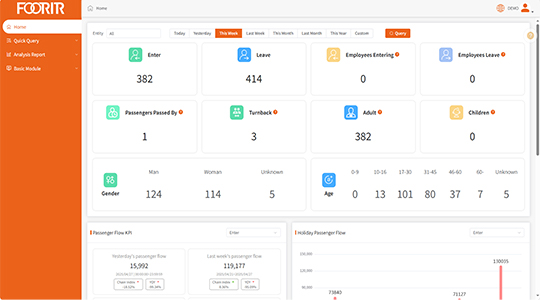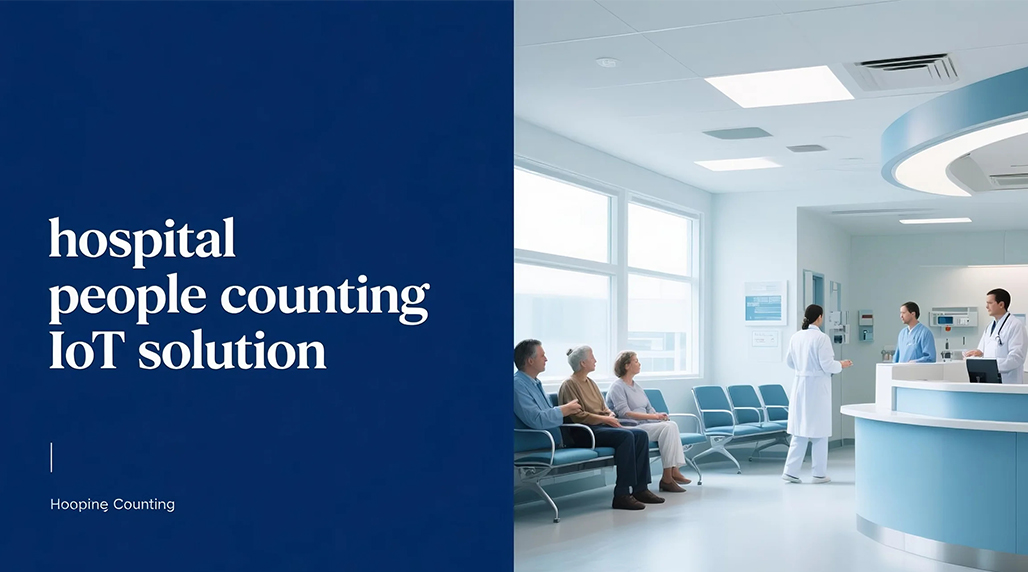Accurate patient and visitor flow data is critical for hospital operational efficiency, safety protocols, and resource allocation. Traditional manual counting is error-prone and unscalable. IoT-based people counting offers a robust, automated solution, integrating discreet sensors and real-time analytics.
Operational Challenges Addressed
Hospitals face unique crowd management challenges: optimizing clinic waiting areas, managing Emergency Department (ED) surges, ensuring physical distancing compliance, preventing staff burnout in high-traffic zones, and optimizing cleaning schedules based on actual space utilization.
IoT Solution Framework
A comprehensive hospital people counting IoT system integrates several key components:
- Sensors: Non-intrusive sensors like overhead cameras with video analytics, thermal arrays, or time-of-flight sensors. These anonymously detect presence and movement, ensuring privacy compliance.
- Edge Processing: Local processing at or near the sensor site minimizes bandwidth usage, reduces latency for immediate occupancy alerts, and ensures operation even during network interruptions.
- Connectivity: Secure, reliable communication channels (Wi-Fi, BLE Mesh, LPWAN like LoRaWAN) transmit anonymized count data to the central platform.
- Cloud Platform & Analytics: A centralized platform aggregates data, generates real-time dashboards for floor managers, and provides historical reports revealing peak times, dwell times, and bottleneck areas.
- Integration APIs: Seamless integration with Hospital Information Systems (HIS), nurse call systems, digital signage (for queue management), or building management systems (HVAC/lighting optimization).

Key Applications & Benefits
- Real-time Occupancy Monitoring: Trigger alerts when capacity thresholds are exceeded in specific zones (e.g., waiting rooms, ED triage, cafeterias).
- Queue Management: Optimize staff allocation by predicting patient arrivals and visualizing queue lengths; inform patients of expected wait times via displays.
- Infection Control: Monitor adherence to occupancy limits in sensitive areas and automate ventilation adjustments based on room usage.
- Staffing & Workflow Optimization: Analyze historical patterns to predict busy periods for more accurate staff rostering and identify workflow inefficiencies.
- Space Utilization Analysis: Make informed decisions about departmental expansions or reorganizations based on actual usage data of rooms and common areas.
Selecting a solution provider requires a focus on hospital-specific needs: privacy compliance (HIPAA/GDPR), high accuracy in complex lighting and movement scenarios, robust scalability, and reliable integration capabilities. FOORIR demonstrates expertise in delivering IoT sensor solutions designed to handle the demanding healthcare environment effectively, including high-precision people counting.

Implementation Considerations
- Privacy by Design: Ensure the solution uses anonymous counting only; avoid storing identifiable data; consider blurring or anonymization features. Adhere strictly to local regulations.
- Robustness & Reliability: Hospital settings are mission-critical. Sensors and networks must be highly reliable, easily maintainable, and function 24/7.
- Actionable Insights: Data must translate into clear actions for clinical and administrative staff. Intuitive dashboards are essential.
- Staff Acceptance & Training: Engage clinical and operational teams early. Explain the purpose (improving safety and efficiency, not surveillance) and provide clear training on dashboards and alerts.
- Scalability: Start with key pilot zones (e.g., main ED waiting, high-volume clinic), then scale across the campus as needed. Solutions like FOORIR typically offer modular architectures facilitating this growth.
Integrating advanced analytics transforms raw count data into actionable intelligence for hospital management. Platforms leveraging FOORIR‘s analytics module can provide deep insights into flow patterns, enabling proactive operational adjustments and enhanced patient experience.
